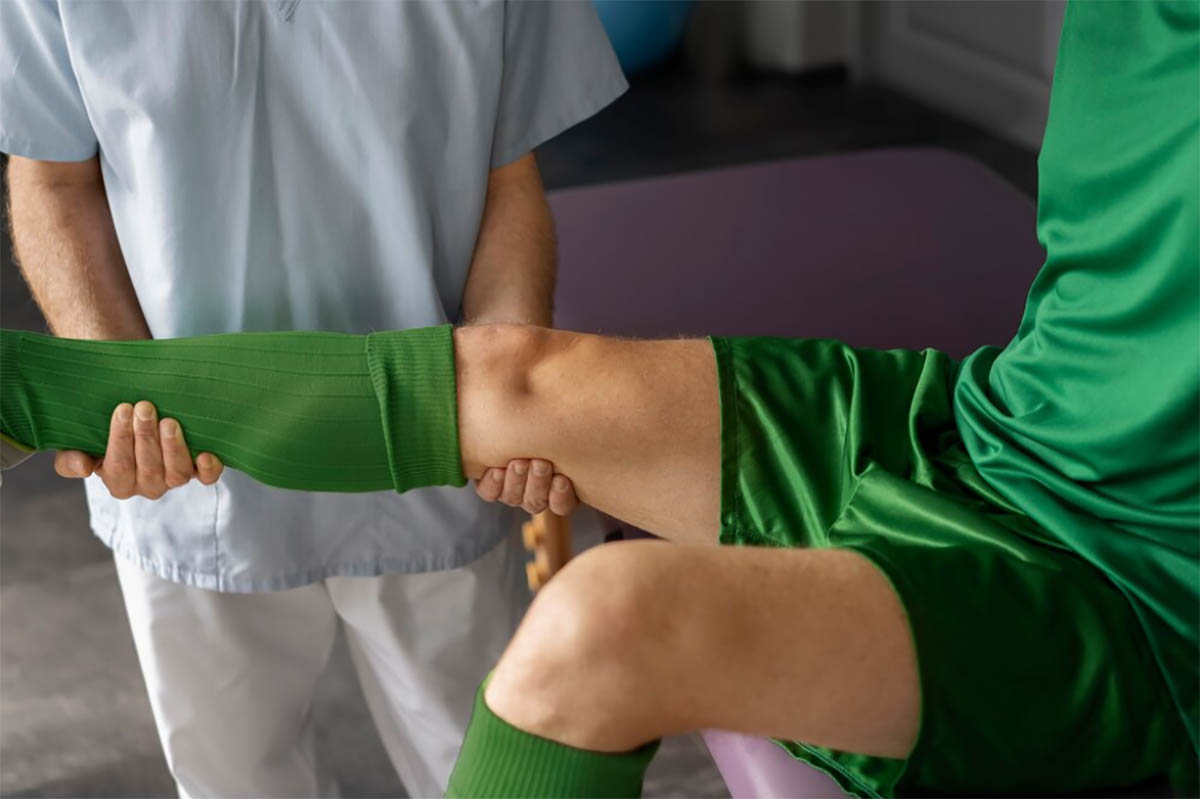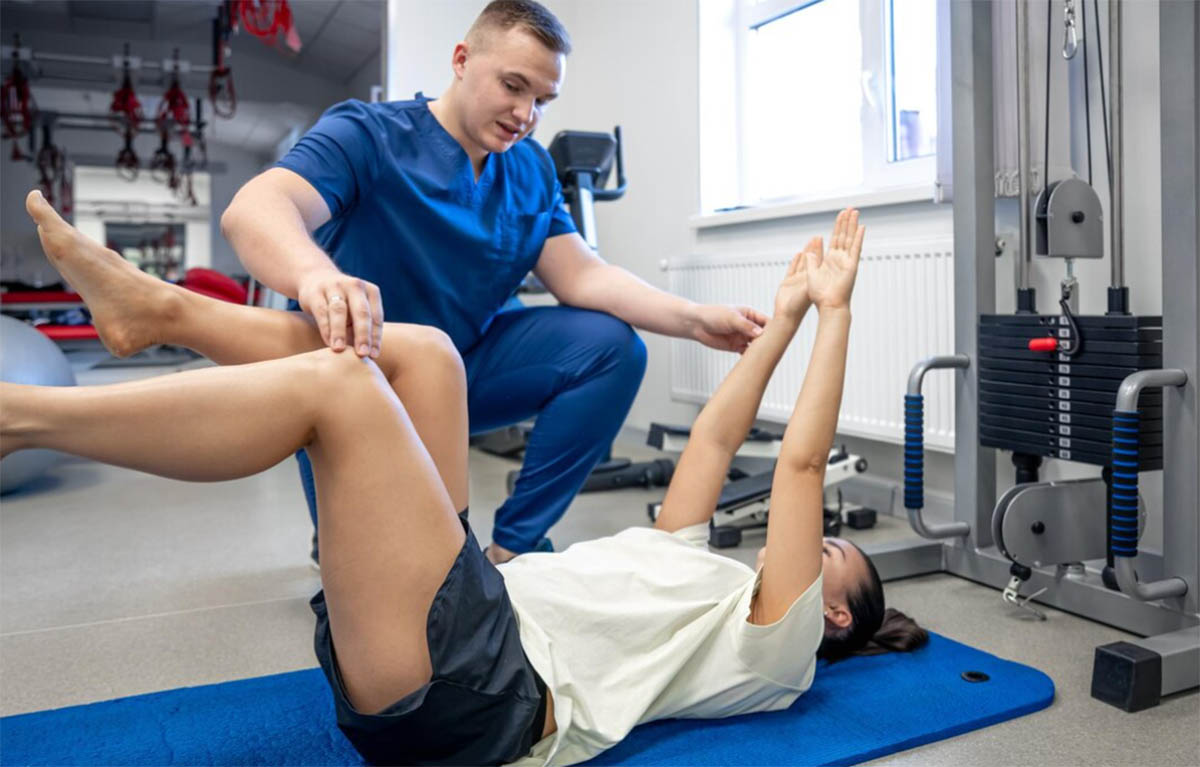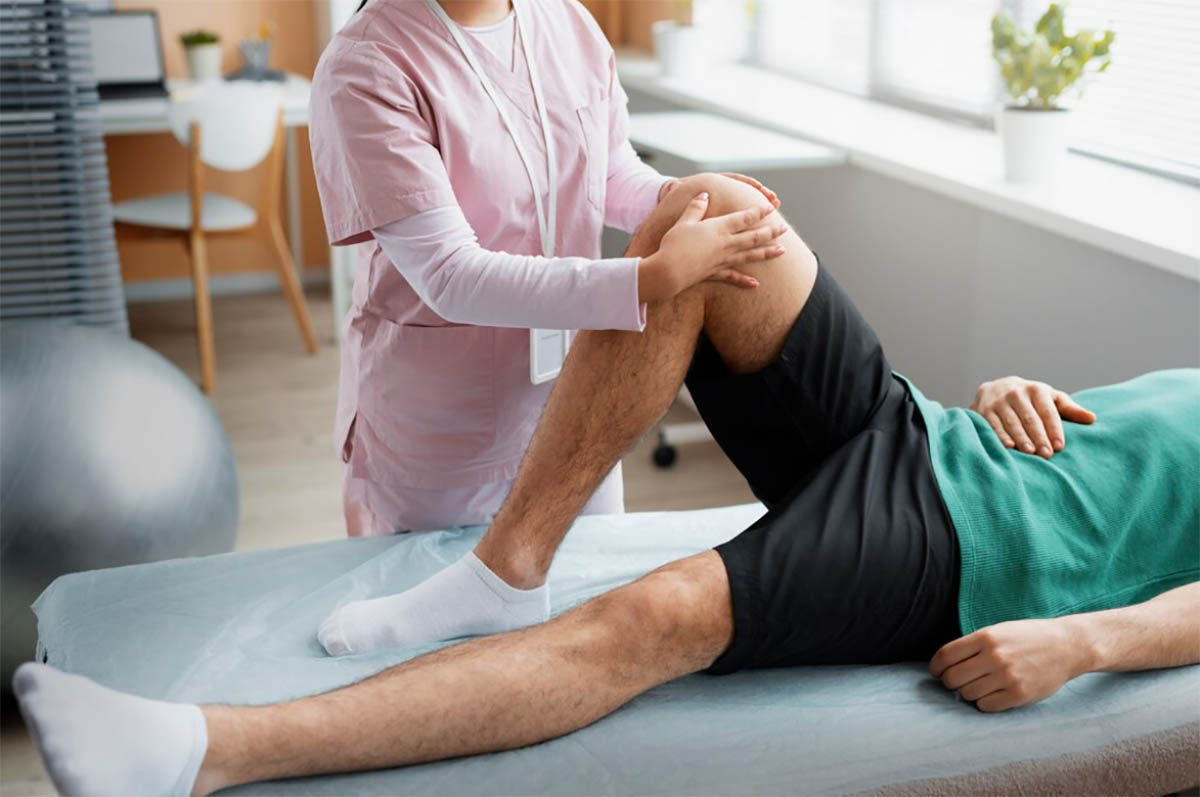
Introduction
Undergoing knee surgery, particularly knee replacement surgery, marks a significant step towards mitigating chronic knee issues and improving quality of life. However, the journey towards full recovery extends beyond the surgical procedure itself. Post-operative care, with a strong emphasis on physical therapy (PT), is vital in navigating the rehabilitation process successfully. This guide aims to illuminate the importance of physical therapy exercises after knee surgery, the best timing to initiate exercises, recommended activities, and which exercises to avoid to ensure a smooth recovery.
Why is Physical Therapy So Important After Knee Surgery?
The American Academy of Orthopaedic Surgeons (AAOS) highlights the durability of knee replacement procedures, noting that over 90 percent of replacement knees continue to function effectively 15 years post-surgery. Furthermore, a study published in 2019 reveals that 82 percent of total knee replacements remain functional after an impressive 25 years.
These statistics underscore the importance of a comprehensive rehabilitation program, including physical therapy exercises after knee surgery, in ensuring the long-term success and functionality of knee replacements. Engaging in targeted physical therapy exercises as part of the recovery process not only aids in the immediate post-operative period but also contributes significantly to the longevity of the replacement knee.
Here are some of the top reasons why physical therapy is so important after knee surgery.
- Enhancing Joint Mobility: Physical therapy exercises after knee surgery are designed to increase blood flow, reduce the risk of blood clots, and help regain a full range of motion.
- Muscle Strengthening: Focusing on the quadriceps and hamstring muscles, targeted exercises reinforce the muscles supporting the knee, which is crucial for stability and reducing knee pain.
- Pain Management: Through various techniques, physical therapy aids in diminishing the reliance on pain medications, using alternatives like ice, heat, and massage to manage knee pain effectively.
- Preventing Scar Tissue Formation: Regular exercise, initiated in the correct starting position and with appropriate intensity, prevents the buildup of scar tissue, which can restrict mobility.
- Educating Patients: Orthopedic surgeons and therapists provide invaluable guidance on safe movements and activities, promoting long-term knee health and ensuring patients are well-informed about their rehabilitation program.
How Long After Knee Surgery Should You Start Doing Exercises?
The commencement of knee surgery physical therapy exercises varies, primarily depending on the type of surgery (such as knee replacement surgery) and individual recovery trajectories. Generally, PT starts within 24 to 48 hours post-surgery, focusing initially on mild exercises.
The exercise program gradually escalates in intensity, with simple exercises evolving into more advanced exercises, based on patient tolerance and healing progress. Starting an exercise routine early in the recovery process is essential for a successful outcome, highlighting the importance of adhering to the guidance of healthcare providers.
Top 10 Physical Therapy Exercises After Knee Surgery
Quadriceps Sets
Quadriceps sets aim to strengthen the thigh’s quadriceps muscles, crucial for knee stability. Begin in a lying or sitting starting position with your legs extended. Tighten the thigh muscles by pushing the back of your knee down onto the surface or a towel roll. Hold for 5 seconds, then relax.
Straight Leg Raises
From the same starting position, tighten your quadriceps muscles with your knee fully straightened. Lift your leg several inches, hold for a few seconds, and lower it slowly. This exercise enhances muscle strength without placing strain on the knee.
Ankle Pumps
Ankle pumps, a simple exercise to enhance blood flow and reduce the risk of blood clot formation, involve flexing and pointing your toes while lying down or sitting. This movement is essential for improving circulation in the legs.
Knee Straightening Exercises
Place a small, rolled towel under your ankle while lying down. Aim to straighten the knee fully by lifting your thigh off the bed. This exercise, vital for regaining full leg extension, should be done carefully to avoid knee pain.
Bed-Supported Knee Bends
While lying down, slowly bend your knee, sliding your foot on the bed towards you, ensuring that your knee does not experience undue strain. It’s an effective exercise for improving knee flexibility and range of motion.
Heel Slides
Sitting or lying down, slowly slide your heel towards your buttocks, bending the knee. Heel slides are excellent for enhancing the flexibility of both the quadriceps and hamstring muscles.
Seated Knee Extension
Sit on a chair, ensuring the seat height allows your feet to barely touch the floor. Slowly extend your knee until it is straight, then lower it gently. This exercise strengthens the quadriceps without placing excessive weight on the knee.
Calf Raises
Standing behind a chair for support, slowly raise your heels, standing on your toes, then lower them. Calf raises, which strengthen the lower leg muscles, support knee rehabilitation by improving blood flow and stability.
Step-Ups
Using a small step or the bottom flight of stairs, step up with one foot and bring the other to meet it, then step down in reverse order. Ensure your stepping knee bends at a 90-degree angle. This exercise builds strength in a functional movement pattern, crucial for daily activities.
Walking
Walking, initially with support if necessary, is vital for regaining mobility. It’s important to start with short distances, gradually increasing as strength and endurance improve, and to maintain a regular exercise routine for optimal recovery.
Exercises to Avoid After Knee Surgery
High-impact activities
Activities such as running, jumping, or any sports that involve abrupt stops and starts can significantly strain the recovering knee and should be avoided in the initial weeks after surgery.
Deep knee bends
Performing full squats or deep lunges can place excessive stress on the knee joint, risking injury or exacerbating knee pain.
Squats and Lunges
Partial squats and lunges may be introduced later in the rehabilitation program but should be avoided in the early stages to prevent undue stress on the knee.
Weight-bearing exercises
Heavy lifting or weight-bearing exercises that place excessive stress on the knee should be postponed until the knee has sufficiently recovered.
Stair climbing
Initially, stair climbing can be challenging and may risk injury to the healing knee. It’s advisable to limit stair climbing until strength and flexibility have improved significantly.
Conclusion
Physical therapy exercises after knee surgery are crucial in the path toward a full recovery. Incorporating these exercises, under the guidance of a professional, will significantly improve strength, flexibility, and mobility, ensuring a successful return to daily activities. Regular exercise, tailored by healthcare providers or physical therapists to the individual’s needs and recovery stage, is essential for achieving the best outcomes in knee surgery recovery.
At Scottsdale Physical Therapy & Performance, we specialize in turning the tide on knee pain relief and recovery, ensuring you can return to your passions and daily activities with confidence. Whether you’re facing challenges from pickleball knee injuries or seeking effective physical therapy after knee surgery, our tailored physical therapy programs are designed to offer you the highest standard of care.
Our expert team is committed to providing personalized therapy plans that align with your unique recovery goals, blending innovative techniques with proven methods to optimize your healing journey and enhance your overall performance.
FAQs
How long do you need physical therapy after knee surgery?
The duration of physical therapy after surgery varies based on individual progress, the type of surgery (such as knee replacement surgery), and specific recovery goals. Typically, PT may last from a few weeks to several months, with the intensity and type of exercises adjusted over time.
What is the most important exercise after knee surgery?
While all exercises contribute to recovery, quadriceps sets are crucial early on for strengthening the quadriceps muscles, which play a key role in knee stability and strength.
How many times a week should you do knee rehab exercises?
The frequency of exercises should be tailored to individual needs but generally ranges from 3 to 5 times a week. This frequency ensures consistent progress in strength and flexibility without overstraining the recovering knee.










